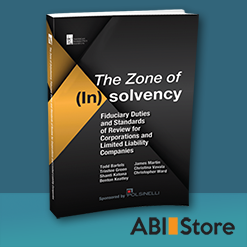| Unsecured creditors are often out-of-the-money or positioned to receive a pittance of a distribution by the terms initially proposed by chapter 11 debtors and the secured lenders who consent to the proposal. This is particularly true if an unpaid portion of secured debt looms as a deficiency claim, threatening to further dilute general unsecured creditor (GUC) recoveries. Advisors of creditors — or an unsecured creditors' committee (UCC) on behalf of its constituency — must be creative and assertive, acting as a consensus-builder to extract value for GUCs. This means understanding how to find or develop leverage through law and policy to
apply pressure on stakeholders to obtain a more meaningful GUC recovery.
Each bankruptcy case generally requires a multi-faceted approach to maximize value and minimize the claims pool. For example, in cases predicated on selling the organization’s main asset(s), developing an independent valuation analysis, supplementing the sale process with potential bidders, and advocating for a more adequate timeline are typical efforts to increase the numerator of the recovery equation. In addition, the latter point (extending the milestones of a truncated sale process) may also permit the UCC to conduct a more fulsome investigation into potential causes of action, which could also lead to a creditor’s elevation in the capital stack by subordinating higher-priority claims.
Reducing the denominator of the recovery equation (i.e., the universe of allowed pari passu GUC claims), however, is an effective means to address recoveries, but it is often overlooked. For example, when dealing with a hurried filing, the DIP budget (the allowance for debtor spend during the pendency of the case) may contemplate generous payment allowances when considering the debtor’s rights under bankruptcy law. Creditors should be well equipped to assess the proposed budget and know which questions to ask. For example, how much does the DIP budget provide for lease liability? Are full cures budgeted? Is “stub rent” contemplated in the forecast? How are rejection damages calculated? How much is available for § 503(b)(9) claims? Are critical vendor, tax, PACA/PASA, and other administrative or priority claims contemplated? These questions, some of
which are discussed in more detail below, should be considered — particularly when analyzing the DIP budget — to maximize creditor recoveries.
|









